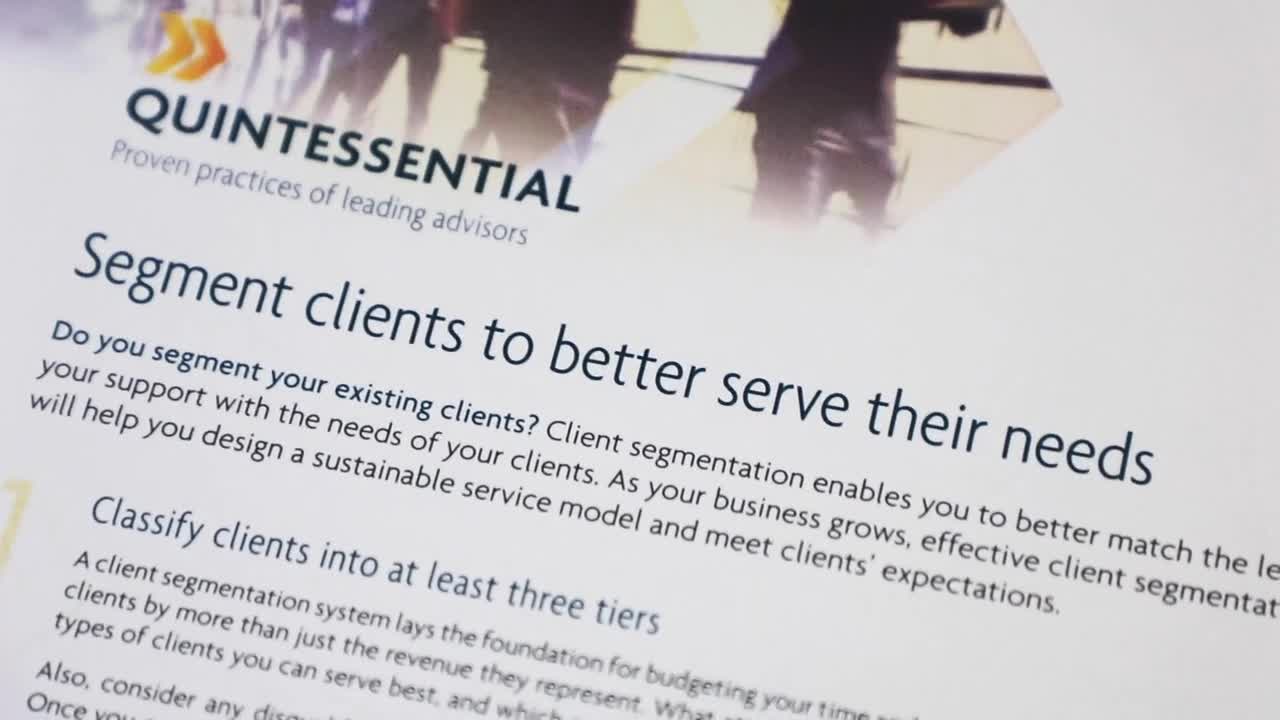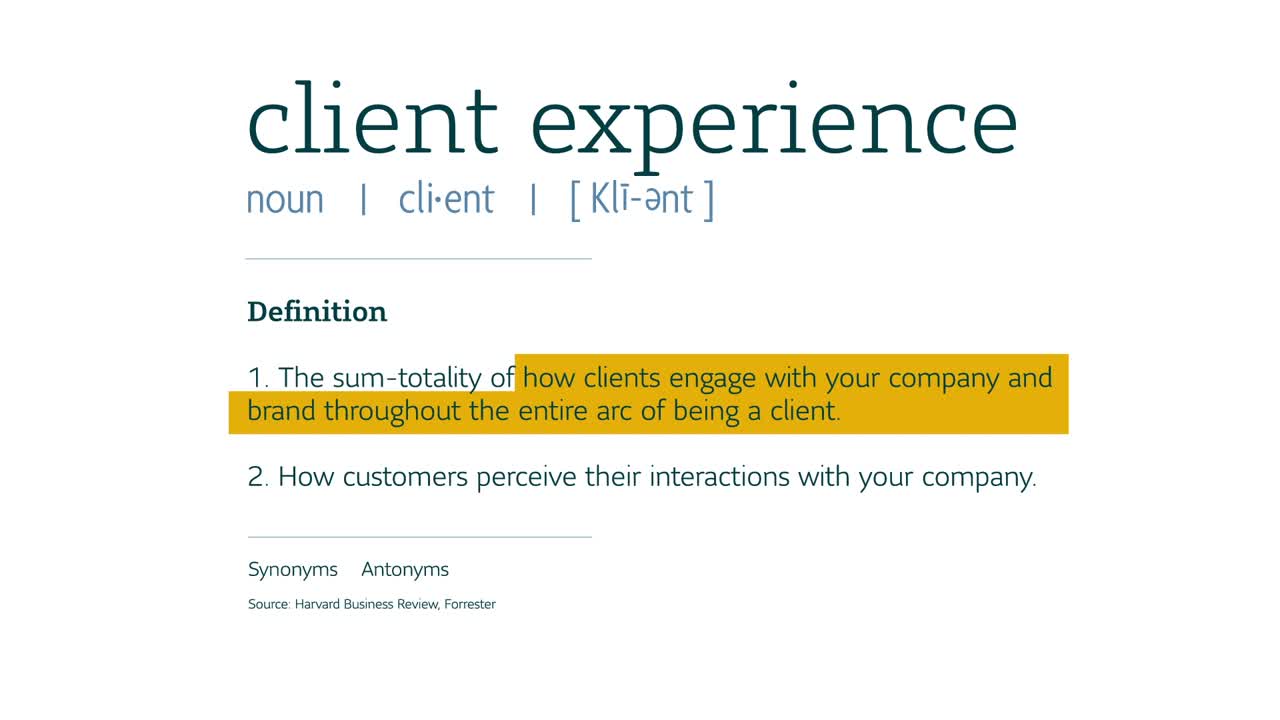Do you segment existing clients?
Client segmentation enables you to better match the level of your support with the needs of clients. As your business grows, effective client segmentation will help you design a sustainable service model and meet clients’ expectations.
Use the following elements to segment clients:
Classify clients
What attributes make an ideal client? Consider segmenting clients by more than just the revenue they represent. Think about what types of clients you can serve best, and which ones are the most likely to give you a referral. Sort these clients into a tiered system, such as AA, A, B, C and D clients.
Dedicate time to clients
Make a conscious decision to put a greater amount of time and resources toward the clients who make a significant contribution to your business.
Get specific. Outline who on your team will serve each client tier, how many one-to-one meetings you expect to have with clients in each tier in a year, and which clients will be included in any client appreciation events. If you’re not specific about the experience you’re aiming to provide for each segment, it’s nearly impossible to track if you’re delivering on your desired level of service.
Stay committed to your segmentation model and ideal client framework. Fewer top-tier clients now doesn’t justify over-serving clients in other tiers. As your business grows to include more top-tier clients, you want to be able to tailor your service to meet their expectations.
Market to clients
Set up your marketing plan to target each segment with a specific goal.
Give top tier clients more of your attention
Offer these clients concierge services, appreciation events and the largest number of one-to-one meetings per year. Maximize the amount you spend on marketing, and consider how much you’re willing to spend to maintain their loyalty.
Build your relationship with middle tier clients further
Which of these clients can you convert to the top tier? Allocate your marketing budget appropriately. Generating more revenue from existing clients is often more cost-effective than prospecting for new clients.
Stay top of mind with bottom tier clients
You have an obligation to still service clients who may not contribute as much to your business. Consider circulating articles or newsletters that include industry insights or trending topics. Service can focus on self-serve options or activities that you can delegate to a team member. A poor client experience may lead to negative reviews and complaints and affect your reputation.





